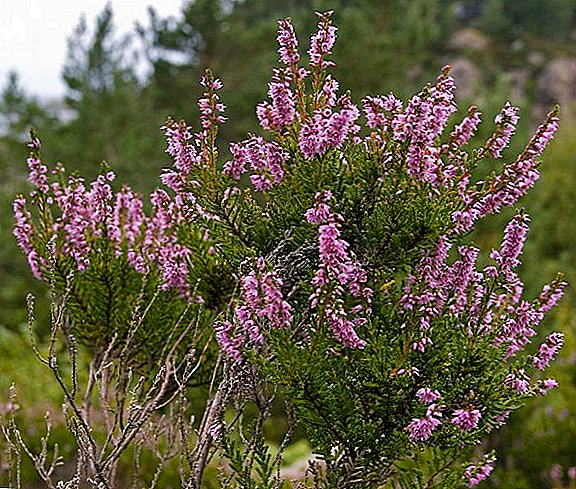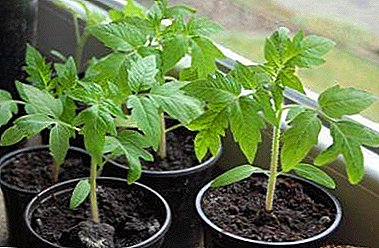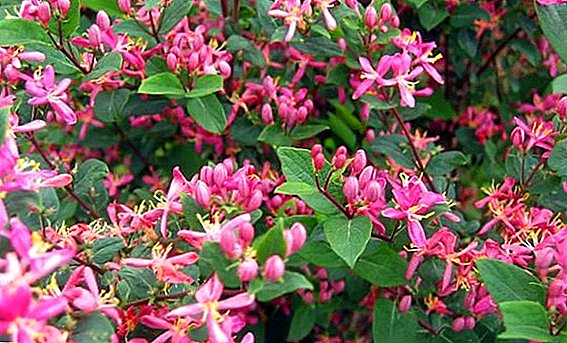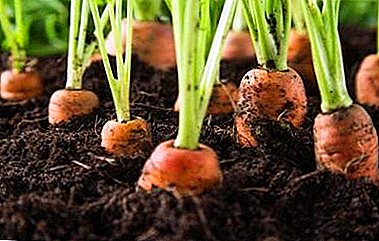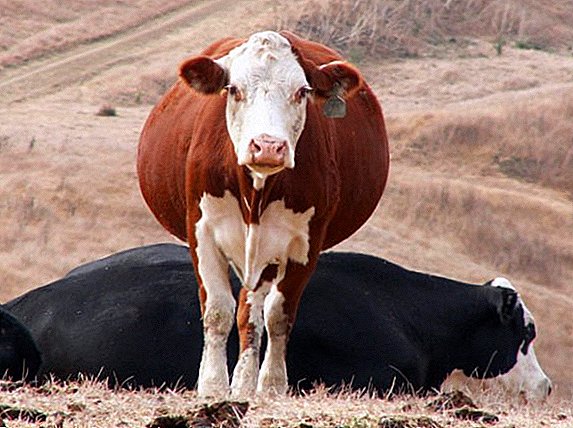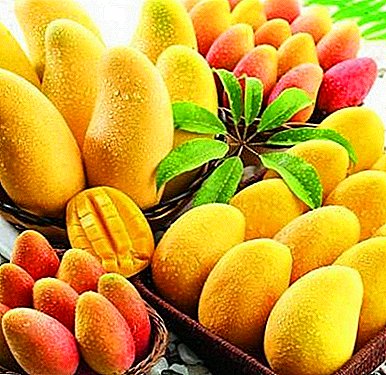
Mango - A stunning fruit with a surprisingly rich taste. Every once tasted mango forever falls in love with this variety of flavors.
In this article you will learn the main types of mango.
general description
Mango tree has been known for more than 4,000 years. In the Vedic Indian texts is presented as "the fruit of the gods."
Depending on the variety and size, mango weight ranges from 200 grams to 1 kilogram. The skin of the fruit can be colored with a wide range of colors: from green to dark red.
Types and varieties
There are countless species of this tree. Next, we consider the most famous varieties of mango with a photo.
Pink orange
Pink-orange (Thai name is KaenOan): The fruits of this variety have a narrow elongated shape. They are characterized by a thin peel of a soft orange color with a slight pink tint. The taste of this fruit can not be called cloying, rather moderately sweet, unlike other varieties of similar color. The pink-orange mango has a fairly dense flesh, which is not typical for most varieties of mango wood. Their weight rarely exceeds 250 grams.
REFERENCE: KaenOan fruits grow in clusters. Ripening period: October-December.

Pink green
Pink Green (Pimsean): This variety is very rare, but is considered one of the best. Many pass by its fruits because of the predominantly green color of the skin, mistakenly considering the fruit to be unripe. However, this is not so, inside it has a rich orange color, surprisingly juicy and sweet flesh. The shape of this Primesean should be rounded and plump. Normal weight for them is 350-450 grams.
REFERENCE: fast growing variety. The withdrawal period is July.

Green small
Green Small Mango (GaewLek) - the smallest of the known varieties of mango. They have a soft, bright (sometimes tinged with yellow) skin. At home in Thailand, the fruit is sold at a much lower price than larger varieties. However, more does not always mean better, but rather more tasty. The fruits of this unfairly undervalued variety are much tastier and sweeter than larger counterparts. Their weight does not exceed 200 grams.
REFERENCE: This variety grows on medium-sized trees with a wide crown. The ripening period is July.

Dark green
Dark green mango (Keo-Sa-Woei): the more ripe, the darker the peel and richer taste. The flesh is surprisingly soft, rich rage color. With the fruits of this variety, you need to be as careful as possible, they crumple very easily and get bruises, and such fruits can ferment. Their size varies from 200 to 500 grams.
REFERENCE: Keo-Sa-Woei tree has a dense crown, abundantly fruiting, and the fruits begin to shoot when the base turns yellow.

Classic yellow
Thai name is Nam-Doc-Mai - the most famous mango variety. It is considered to be "noble". The fruits of this variety have an elongated shape; are both small and very large. The weight of one fruit can reach up to 500 grams. Very ripe Nam-Doc-Mai sugary sweet, sugar. And if you choose a slightly unripe fruit, then enjoy the light, pleasant sourness.
REFERENCE: the fruit ripening period is in June-July, but the Nam-Doc-Mai trees often bloom and bear fruit not on time, thereby postponing the ripening period for a couple of months forward or backward. It grows well in a cool climate.

Huge
Yes, such a variety really exists! To taste, the fruits of a huge mango are similar to pink-orange, only with a slightly less pronounced taste. And the flesh is softer and tender. As it is not difficult to guess by name, the size of the fruit is huge. The weight of one fruit can reach as much as 800 grams.
Green classic
This variety is very similar to the classic yellow mango. Very similar shape and taste. And also this variety is very good in taste in an unripe condition.

Classic green yellow
The Thai name is Thong-Dam. Too delicious, almost non-fibrous flesh.
REFERENCE: fairly fast-growing variety, tree beautiful slender shape.
Green yellow elongated
Green-yellow long mango (Thai name NangKlangWan): in shape and size very similar to the pink-orange mango. However, the taste is very different. The pulp is quite fibrous and gives off sourness.




